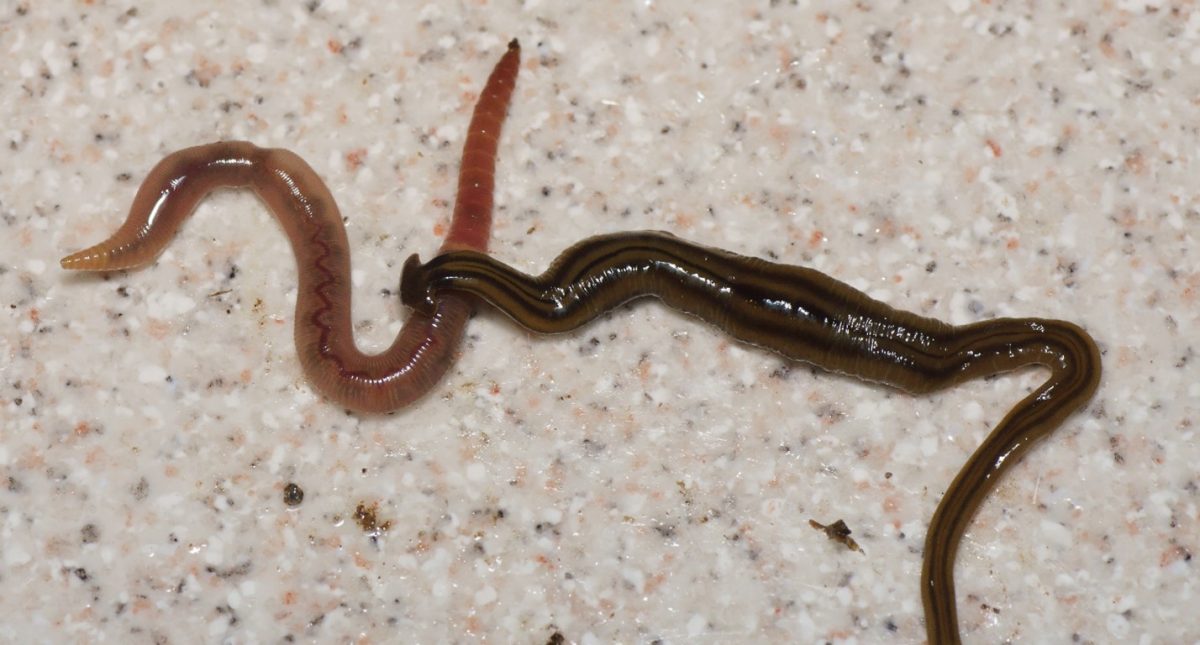Invasive hammerhead worms are a dangerous problem for Arkansas citizens, these Broadhead planarians eat helpful earthworms.
Hammerhead worms have a distinct shovel-shaped head and long worm body. They prefer warm, moist climates and darkness as their body needs moisture, similar to many other worms.
These worms were likely brought to North America through the soil of potted plants coming from Southeast Asia.
“Hammerhead worms can displace parts of the environment, and can harm plants and birds reliant on earthworms,” Torren Williams, vice president of the Entomology Club and an avid bug lover, said.
The worm’s mucus contains tetrodotoxin, a dangerous neurotoxin; these properties can make it difficult for native wildlife to remove. The toxin is also found in some pufferfish, blue-ringed octopus and moon snails. The toxin is dangerous because it can’t be cured, due to how it shuts down the nervous system.
“The toxin locks voltage gate sodium channels, these channels help control nerve impulses which can potentially cause paralysis,” anatomy teacher Ashley Keesee said.
The worms are difficult to catch and find due to their preferences for the night time and their small size. Hammerhead worms can pose a large risk to local earthworms and anything that preys on earthworms, as predators may try to eat them.







